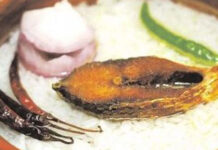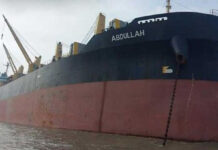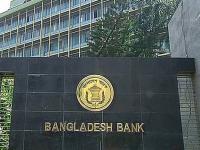How do we characterize or categorize the people of Shahbag? Who are the people of Shahbag? … What is the class character of this group, what excites or drives this group? Who they were during different periods of our history- how they were represented during different historical milestone of Bangladesh.
There is absolutely no question that the mass gathering in Shahbag Square spanned beyond any specific party or ideology. It was a spontaneous gathering of middle class Dhakaites of all age and gender. And there is no reason to believe that this was only a gathering of the supporters of Awami League and its allied leftist parties. People from all political spectrum, even staunch haters of or Awami League or strong BNP supporters were also in attendance.
So how do we characterize or categorize the people of Shahbag? Who are the people of Shahbag? Yes they all chanted hanging death of Abdul Quader Molla. But is it their only identity or unifying bond?
What is the class character of this group, what excites or drives this group? Who they were during different periods of our history- how they were represented during different historical milestone of Bangladesh.
If we look a bit deep into the composition of the Shahbag crowd, we will see Awami League supporters. Not all (or even most) Shahbag crowd is Awami League supporters. But all Awami League supporters are supportive of Shahbag. And yes there also were ex urban leftists, now retired or Awami League converted left leaders and activists who were in Shahbag very loudly and actively. And there were some dhandabaaz people and anti-Jamaat Islamists, like Rajakar Maolana Misbah, Sholakia Mosque Imam, Inqilab’s Jmiatul Mudarresin leadership etc. But outside of these groups, the majority of the Shahbag mass do not fall into any of the category mentioned above. These are younger urban educated folks, these are the middle age professionals, these are the affluent class men and women, these are neo-corporate ex lefties, and these are the ordinary folks around me. What is the common feature of this group, what are the factors unifying the group? Well, it is very difficult to characterize them in one sentence. But if we open the pages of Bangladesh history, we may get a better idea who are these people and what pulls them together.
During the most recent historical milestone, the military takeover of January 11 2007 – popularly known as 1/11, these are the people – the urban educated middle class- who overwhelmingly rooted for General Moeen U Ahmed. They were ecstatic at the prospect of minus two and passionately subscribed to the potato revolution of General Moeen U Ahmed. Few months later these same group of people thought Dr. Muhammad Yunus is the savior. Only difference in the composition of the group between then and now is that now this group is joined by the mass supporters of Awami League.
During the next milestone of Bangladesh history, BDR Massacre of February 25 2009, these were the people who were initially all behind the oppressed mutineering Sepoys and within hours to days these are the people who mourned the mindless massacre of army officers.
If we go back in history, these are the people who overwhelmingly stood behind the nationalist leader Bangabandhu Mujib during late sixties and took up arms to fight the Pakistanis. But when 15th August Massacre took place, the urban middle class Dhakaites converged to Dhaka Radio station with garlands to show allegiance to Major Dalim. And then they overwhelmingly lined up behind the pragmatic leadership of President Ziaur Rahman after the failed leftist revolution of November 7.
During nine years of Ershad regime the defiant urban Bangladeshi who never accepted Ershad as a legitimate leader and stood behind the popular anti-autocracy movement again consisted of this same group of people – the young, the urban and the educated.
Looking at the historical position of these groups of urbanities, a character of the group slowly takes shapes. These are the urban educated part of the society; they are disproportionately loud and visible. The print and the electronic media as well as the literary intellectual part of the society usually belongs to this group.
This group however has a relatively short memory span and rather infidel ideological allegiance. In Shahbag square, we have seen the deep hatred at Jamaat Shibir and Kader Molla. But only in the 80s, in the same Square, the hatred towards autocratic ruler H M Ershad was much more intense. The hatred, passion for vengeance at Ershad was much deeper.
Yet, only in 20 years H M Ershad becomes a murubbi figure power broker in the same city. And only in 3.5 years in the eye of this middle class, Bangabandhu Mujib became the Pharaoh from being the most loved, revered, followed leader in history of the Bengalis. Zia, the most respected and popular ruler Bangladesh ever got, is now a national villain to this group. The 1/11 famed Bulldozer and potato revolution and General Moeen U Ahmed became irrelevant within the matter of only one year. From being the savior of the Nation Yunus now is the enemy number one.
If the above mentioned historical trends can be a guide, one should not go for any long term investment in the spirit of Shahbag. Like all the national passions, Shahbag will dissipate someday. And as the Shahbag passion dissipates — may be it may give way for another new passion.
As the historical context shows us the transient nature of our passion and focus – it also helps us look into Shahbag phenomenon in a bigger context. Yes Shahbag’s gonojagoron Mancho kept its demand fairly narrow – Hanging of alleged war criminals, Banning of Jamaat and actions against Banks like Islami Bank. But if we look into historical eruptions of Dhaka middle class for some change, Shahbag can definitely be analyzed in a broader sense. Our educated vocal middle class is excitable and collectively excited; they can be a formidable force. This class crave for change, but never can they articulate their demands in a coherent way. Rather they are often seen rooting for or rejoicing at self-destructive achievements. Examples may be Mujib family massacre, Gen Moeen U Ahmed’s economy breaking Bulldozer revolution. However this force can be used positively too. The biggest example of constructive use in how Mujib united this people to fight our war of liberation. Other examples of positive use of this force include Ziaur Rahman’s building of national consensus and successful anti-Ershad movement. How a formidable force will be used, what ultimate goal can be reached using a mass force – depends on its leadership. How Shahbag movement will use its capital – the youth energy, the overwhelming middle class support – will depend on how the leadership wants to use it. Because Mujib Zia could use this force in the positive way, they are statesmen. And because Khaleda Hasina could never go beyond their own secure group – they remain politicians. And those who did not have an idea on what powerful force they are riding on e.g. Moeen U Ahmed – they are in dustbin of history. It remains to be seen how this Shahbag movement transforms and what good it brings to our society. But Shahbag leadership must take lesson from the history that the energy will not be behind them for an eternal period. Bangabandhu Mujib was only given 3 and half years.
Source: Alal O Dulal










Very analyzing and incisive writing indeed. Yes, the Bangalee character is very transient and the Bangalees as a nation are emotion-driven, forgetful and imprudent, if we correctly reassess ourselves. Yes, we are self-destructive too and also inimical to whatever nice and good-looking there may be. Don’t you see the beautiful, modern buses, railway carriages etc soon lose their beauty and splendour within a few months – their seats being torn, toilets dirtiest and unusable, window panes broken, electric fittings gone and so on. We saw the 10 million worth VOLVO buses lost even their important parts and all went off the road within a year. Such a shifting, unstable character do we nourish. Emperor Jahangir’s General Islam Khan (?) took no time to leave Bengal observing the rise and fall of Buriganga within a day’s time. And basically we are a very greedy nation. Nothing can satisfy us – neither affluence nor poverty. Perhaps we hardly know what actually we want. That’s why both Bangabandhu and Ziaur Rahman had to leave this world prematurely though you truly called them ‘statesmen’. Thank you very much for your interesting writing,
Objective but perpetuates a dismal character for Bangladeshis. We must search our souls and cleanse it with detergent soap.